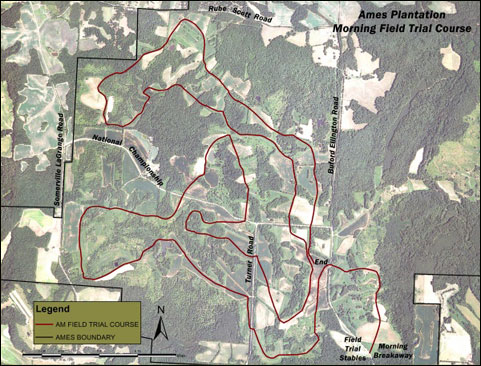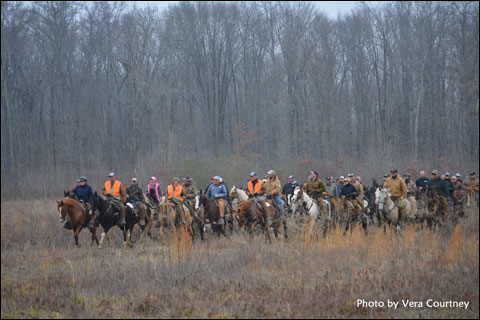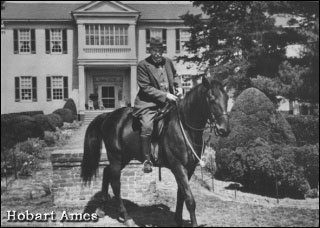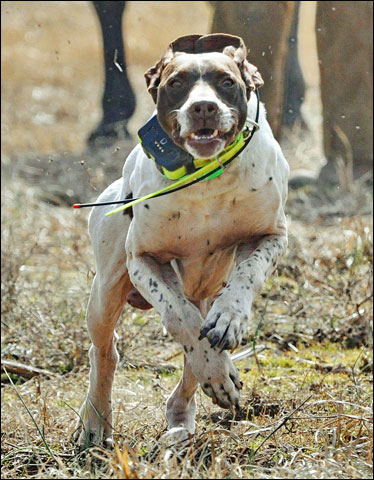Preparing the Legendary Ames Plantation for the 121st National Championship for Bird Dogs

The heaps of papers, folders and boxes in Dr. Rick Carlisle’s office conjure an Ivy-Tower academic in pursuit of a big cosmic revelation. But wait, what about his shirt? It’s a vented short-sleeve embroidered with a prominent Ames Plantation logo of two bobwhite quail on the wing.
Originally from a farming and livestock family in Bolton, Mississippi, Dr. Carlisle now lives in the intersection of academia, bird dogs, quail hunting and farming. He received his Bachelors of Science degree from Mississippi State University in Animal Sciences, his Masters of Science degree from Mississippi State University in Agronomy with a major emphasis in Forage & Pastures Crops and a minor in Ruminant Nutrition and his Ph.D. from the University of Tennessee, Knoxville, with the same major emphasis as his Master’s Degree.

But right now, he’s super-busy preparing the legendary Ames Plantation for the Super Bowl of field trials, the National Championship for Bird Dogs being held Feb 10, 2020 in tiny Grand Junction, Tennessee. Ames Plantation has been the permanent home of America’s prominent field trial since 1915, and as Center Director Dr. Carlisle is the guy in charge of prepping this hallowed ground.

A map of the morning course from the running of the 2019 National Championship for Bird Dogs at Ames Plantation.
He started at the Ames Plantation in 1982 and over the years graduated to Research Center Director. His amiable disposition belies the enormity of the job. While the 18,400-acre plantation is prime quail habitat, only a few hunts are offered. Instead, Ames Planation is a wildlife and forestry research center that works in conjunction with the likes of the University of Tennessee, University of Memphis, Rhodes College and Mississippi State University.

You’ll often find students and scholars working there for weeks or months, staying in the cabins and dormitories, researching the forests, wildlife, waterways, 19th century artifacts and prehistoric digs. Limited turkey, duck and deer hunts, the field trial, tourism and academic research contribute to the plantation’s financial self-sufficiency. The privately-owned Ames Plantation is operated by a trust of the Hobart Ames Foundation that benefits The University of Tennessee and the National Championship.

I had arrived at Ames Plantation with Robert Milner, gundog-trainer extraordinaire and proprietor of Duckhill Kennels in nearby Somerville, and his friend Ken Blackman, owner of Wolf River Kennels in Williston. In this part of the world, it’s no coincidence that both gents are bird-dog trainers. Grand Junction bills itself as the Bird Dog Capital of the World on the merits of Ames Plantation and the National Bird Dog Museum.
Grand Junction was established in 1854. The town got its name from the Grand Junction of the Memphis and the Charleston Mississippi Railroad Lines – making it a hot spot during the Civil War.
Today, with a population of under 300 souls, Grand Junction is a speck of a town (but the Junction Inn Restaurant is a must for the fried-chicken lunch). Come the National Championship about 3,000 people will flock to the area.

Some 40 years after the founding of Grand Junction and 125 miles south, the progenitor of the National Championship for Bird Dogs took place in West Point, Mississippi. It moved to the U.S. Grounds in Grand Junction for 1900, 1901 and again in 1912, although Ames Plantation hosted the running from 1902 through 1909 under the hospitality of the plantation’s new owner, industrialist and field-trial enthusiast Hobart Ames. For the most part, the field trials have been run at Ames Plantation since 1915 – persisting even after Mr. Ames died in 1945 when the property passed to his widow, Julia Colony Ames.

With the 121st National Championship in sight, Dr. Carlisle and his team of employees and volunteers have been hard at it.
I had visited in June, early in the planting season, and we started talking about the cover necessary for the upcoming National Championship. Dr. Carlisle referenced data points from the computer screen on his desk and different charts and graphs to explain planting and harvesting cycles for the field trial course that runs 11½ linear miles, it’s composition about 25-percent timber with the balance open ground and grassland. Sometimes the crew will harvest timber to stimulate more grassland growth on the course.

At the time, the land had already been bush-hogged and Dr. Carlisle was overseeing a planting for the 2019 running. Approximately 240 to 270 acres of sorghum, teosinte (a strain of maize), millex and Egyptian wheat have proven effect cover against raptors and other predators. He explained that those crops can break at about four-feet high, allowing the quail to covey in the remaining undergrowth while also providing food. These feed patches range between one-half to 1½ acres and have geometric shapes such as squares, rectangles and trapezoids holding strips 6 to 10 rows wide. Drones fly over the feed plots to fine tune production.
You can find Dr. Carlisle in the field behind the wheel of a tractor pulling a disc. He called the work his “therapy” for getting out of the office and cell-phone range.

In mid-September, 3,000 quail were released in or near the prepared feed patches. The birds (boxed 20 birds per box) arrived from Georgia. Raised to be wild, and with a survival instinct, the birds should thrive in their new home. They will be joined by an additional 3,200 birds releasing during the rest of the month – bringing the total number of bobwhite quail to 6,200.

The clock is ticking as we get closer to the February 10th start of the National Championship for Bird Dogs. Running on some 6,000 acres of the Ames Plantation, expect the usual entry of about 36 English Pointers and English Setters. And since Dr. Carlisle served as Assistant Secretary/Treasurer of the National Field Trial Champion Association from 1984 to 2002 and now Secretary/Treasurer since 2003, depending on the circumstances, you may even see him on horseback serving as a judge.
Irwin Greenstein is the publisher of Shotgun Life. You can reach him at contact@shotgunlife.com
Helpful resources:

Irwin Greenstein is Publisher of Shotgun Life. Please send your comments to letters@shotgunlife.com.


Comments